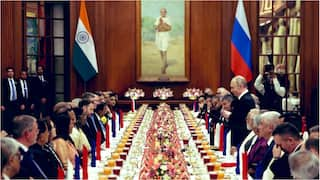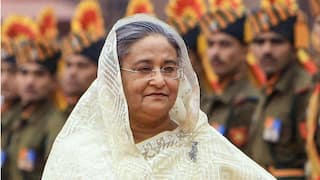China Rotates 90% Troops Deployed Against India Due To 'Harsh Weather Conditions'
China has been maintaining over 50,000 troops close to the Indian territory in eastern Ladakh since the April-May timeframe last year.

New Delhi: China’s People’s Liberation Army (PLA) has rotated 90 percent of its manpower deployed opposite the Eastern Ladakh sector and brought in fresh soldiers from the hinterland due to extreme cold conditions in the area.
Deploying over 50,000 troops close to the Indian territory in eastern Ladakh since the April-May timeframe last year, China has been maintaining them there despite the limited troops withdrawal from forward locations in the Pangong lake sector.
“The Chinese have brought in fresh troops from the hinterland to replace the troops who had been there for the last one year. Around 90 percent of their troops have been rotated,” ANI quoted sources as saying.
READ | India Now Ranks 117 On 17 Sustainable Development Goals Adopted As 2030 Agenda: Report
Sources added the reason for this move may be that the troops deployed in the extreme conditions in the high latitude areas have been severely affected by the extreme conditions faced in high latitude and extreme cold besides other related issues.
Sources further said the Chinese troops even during deployment in friction points in Pangong lake area were getting rotated on an almost daily basis at high altitude posts and their movement had become very restricted.
The Indian Army on the other hand deploys its troops in the high altitude areas for a tenure of two years and around 40-50 percent troops get rotated every year. The tenures of ITBP soldiers deployed in these conditions are at times much longer than two years.
Deployed against each other in a big way in eastern Ladakh and other areas along the Line of Actual Control since April-May timeframe last year, the Indian and Chinese troops have indulged in several face offs caused by the aggression there from Beijing’s side.
The Indian side also retaliated strongly after the initial Chinese aggression and ensured they are kept in check at all places.
The Indian side also surprised the Chinese forces later by occupying strategic heights at the southern bank of the lake from where they were dominating the Chinese deployment there.
ALSO READ | India And Australia Increase Farm Trade, Despite China’s High Tariffs
The two sides eventually agreed to vacate their respective positions in the Pangong lake area and stop patrolling there earlier this year. The troops withdrawn from these locations have, however, remained within close proximity from both sides and forward deployments are still continuing there.
The Chinese troops have from the beginning of the summer this year returned to the training areas from where they diverted towards the Indian front last year.
New Delhi is keeping a close watch on the situation there.
Chief of Army Staff, General M.M. Naravane, has been frequently visiting the Ladakh sector and directing the formations on ground to deal with the situation.






































